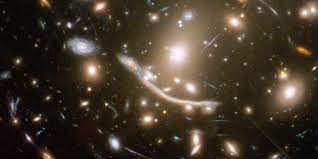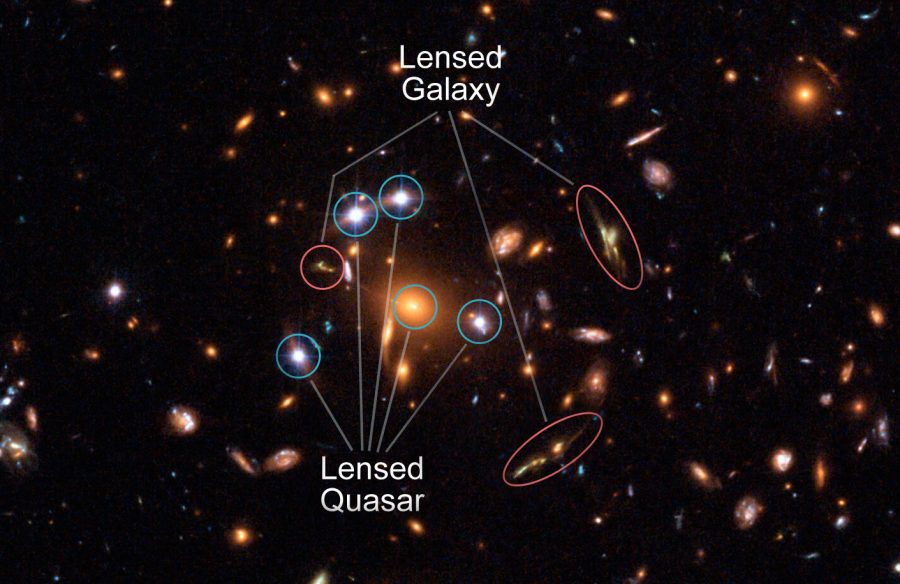The Giant Magnifying Glass.
How gravitational lensing works
Source: Nasa
https://www.nasa.gov/content/discoveries-highlights-shining-a-light-on-dark-matter
Gravitational Lensing
Hubble is meant to examine the intriguing visual effects that gravity, when taken to its limits, might find fascinating things. General relativity by Einstein illustrates how mass concentrations alter the space around them. When a big mass of matter, such a galaxy cluster, creates a gravitational field that bends and enlarges the light from distant galaxies behind it but within the field of vision, this phenomenon is known as gravitational lensing. It has the same effect as gazing through a very large magnifying lens. This enables researchers to examine the specifics of ancient galaxies that are too far away to be viewed using current equipment and telescopes. When they pass in front of farther away stars, smaller objects, like individual stars, can also operate as gravitational lenses. Several days or weeks later,As a result of the gravitational enhancement caused by the nearby object, the light from the distant star will look brighter for a moment. The name of this event is gravitational microlensing.
When there is only one concentration of matter at the center, like in the galaxy’s dense core, gravitational lensing is in its most basic state. One or more pictures of the background galaxy are frequently produced when light from a distant galaxy is refracted around its nucleus. A nearly perfect ring of light, known as an Einstein ring, is created as the lens gets closer to having perfect symmetry. Astronomers now know about a lot more Einstein rings because of Hubble’s findings.
Massive galaxy cluster observations show a more complicated gravitational lens. Despite the fact that a galaxy clusters’ makeup of matter typically has a center, it is rarely symmetrically circular, and it can be a bit patchy. The cluster acts as a lens, and background galaxies’ images frequently show as brief, narrow “lensed arcs” on the cluster’s edge. Also serving as indicators of the distribution of matter within the galaxy cluster are these lensed images. The findings indicate that the visible galaxies and the hot plasma that surrounds them do not contain the majority of the stuff in the galaxy cluster.

It is dark matter since it does not emit light. The distribution of all matter, both visible and dark, can be seen in the distribution of lens pictures. Galaxy cluster dark matter maps have been produced using gravitational lensing data from Hubble. In turn, the Galaxy Cluster Matter Map supports more fully comprehending and examining gravitational lens images. The location of the farthest galaxies in a picture of a cluster of galaxies can be predicted using a model of the distribution of matter or it can be used to identify numerous photos of the same galaxy. In order to better understand both gravitational lensing and the distribution of materials in the cluster, astronomers combine the two.
Related Articles
https://hubblesite.org/contents/articles/gravitational-lensing
https://esahubble.org/wordbank/gravitational-lensing/
https://earthsky.org/space/what-is-gravitational-lensing-einstein-ring/
https://www.science.org.au/curious/space-time/gravitational-lensing
https://www.cfa.harvard.edu/research/topic/gravitational-lensing











